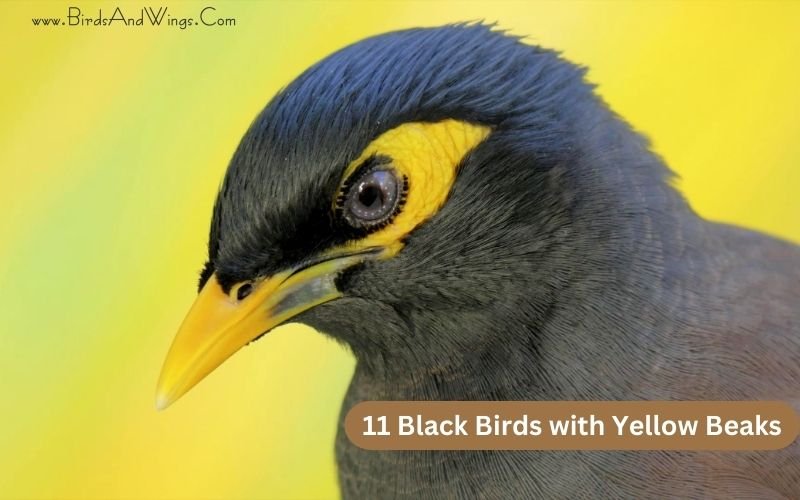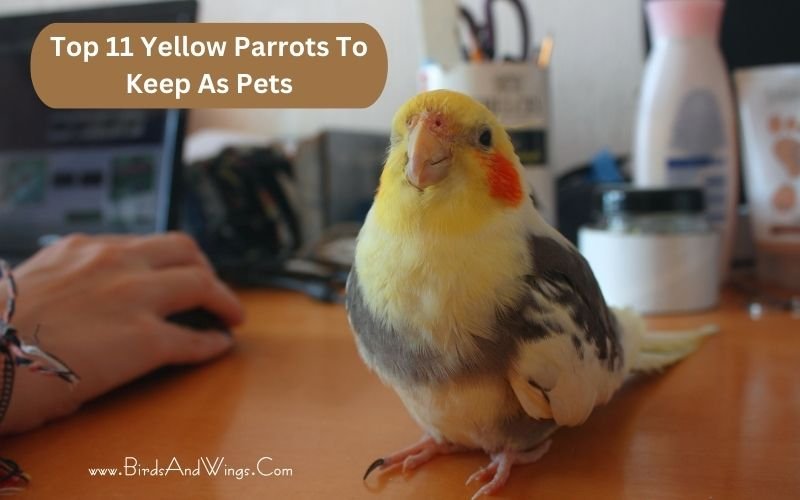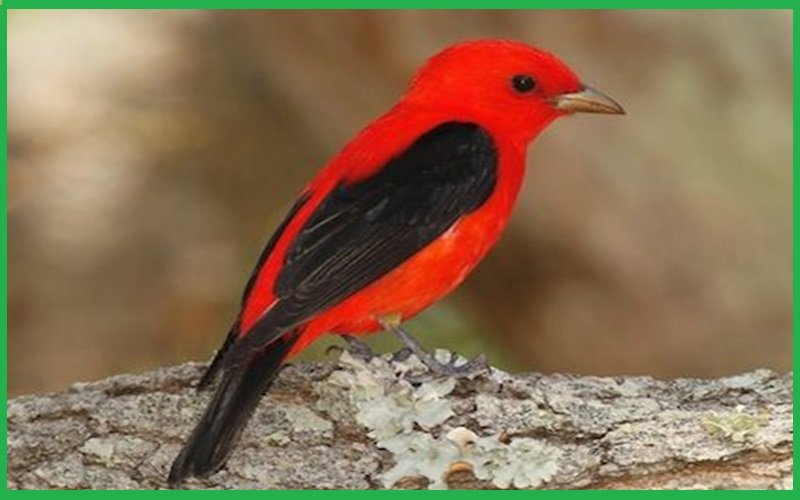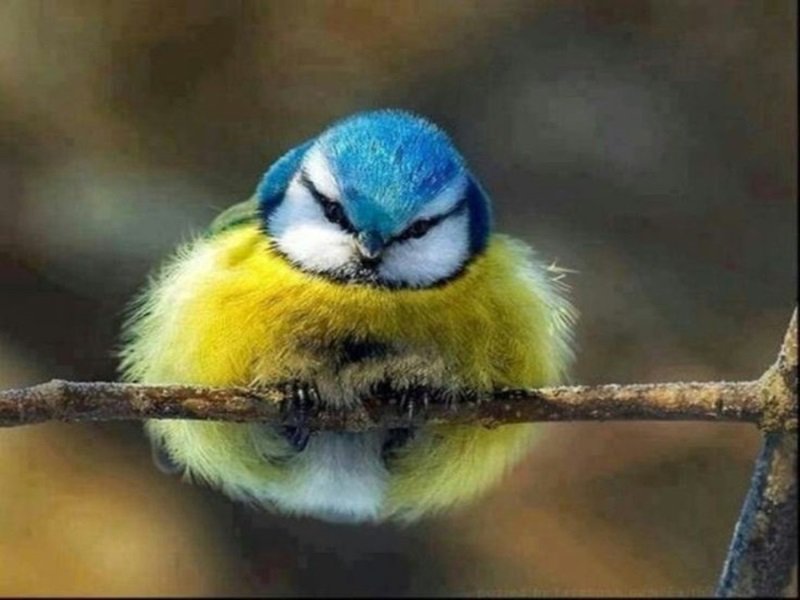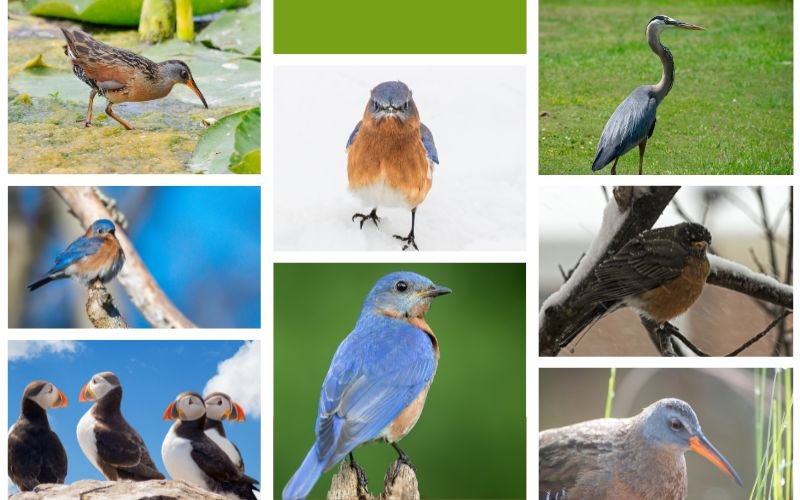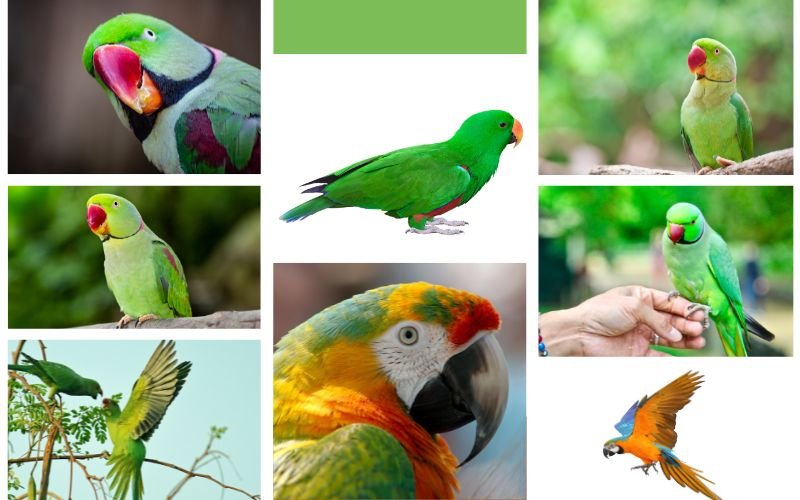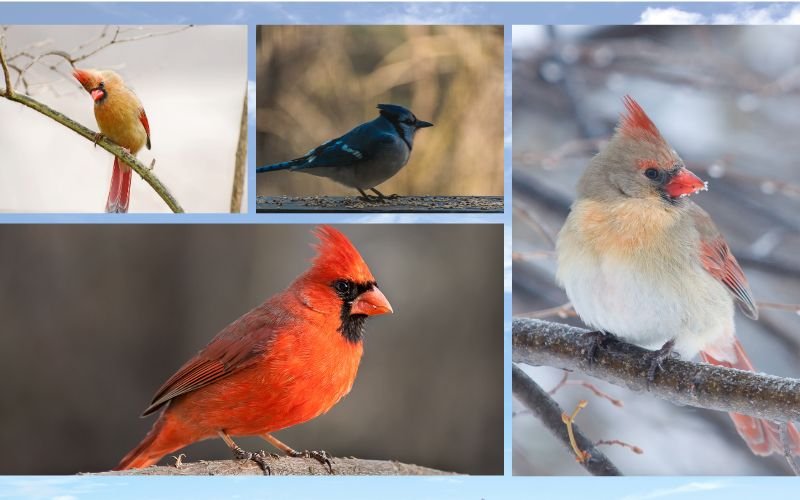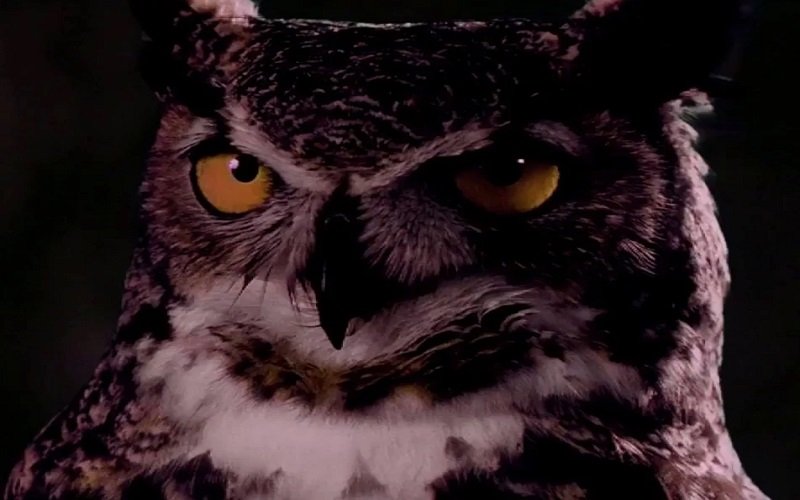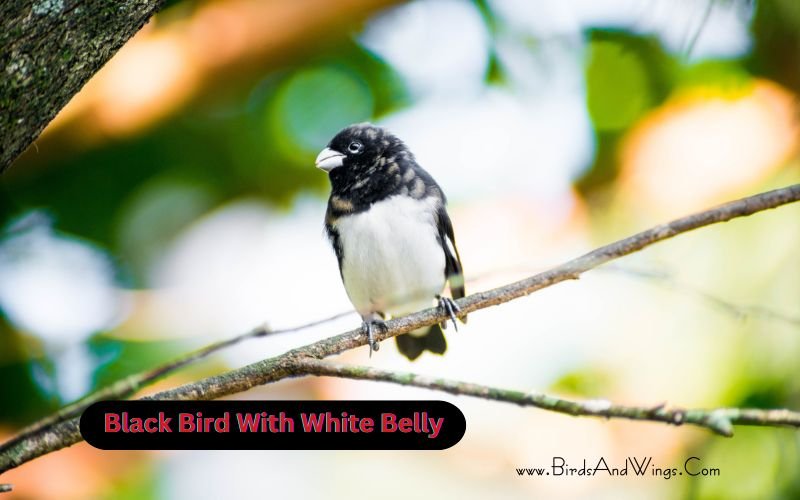Birds have always charmed humans with their unique appearances and adaptability. Among all other avian species, certain black birds with yellow beaks divert human attention towards them. This article will look for the top 11 black birds with yellow beaks, including their scientific names, sizes, native places, lifespans, food diets, and other attributes to survive in nature.
List Of 11 Black Birds with Yellow Beaks
Birds have diversity in colors, characteristics, and adaptation qualities to survive in nature. Every species has their characteristics, making them unique and extraordinary among other birds. This section will discuss the top 11 black birds with yellow beaks, besides discussing their characteristics, scientific names, size, native place, food habits, and other details of their existence.
1: American robin
- Scientific name: Turdus migratorius
- Lifespan: average 2 years
- Native to: Europe, North America
- Size: 23-28 cm
- Food or Diet: insects: earthworms, beetles, grubs, caterpillars grasses and fruits
American birds are average-sized birds with brown wings, black heads, orange chests, or breasts with yellow beaks. Their wings are around 31 to 41 centimeters. These spices breed primarily from Alaska, Canada, Florida, and Mexico in North America.
Just like their native places, they prefer open lands, woodlands, urban areas, and open farmlands for their habitats. Their 40% food diets contain insects such as grasshoppers, ants, earthworms, beetles, caterpillars, etc.
Besides, 60% of wild and captivity birds prefer fruits and berries. They create a flock and stay with their flocks. However, their flocks might break while providing food to their ants, etc.
American robin birds generally become active on the day, but in winter these birds get together in large flocks at night to roost in trees in scheduled swamps or dense forests. These birds also sing with other thrush birds. Their song duration mostly starts in late February or early March to the end of July or early August.
2: Common black birds
- Scientific name: Turdus merula
- Lifespan: around 3 years
- Native to: North America
- Size: 23.5 cm to 29 cm
- Food or Diet: insects, earthworms, seeds, berries, small mammals, lizards etc
Common blackbirds, known as Eurasian Blackbirds, are medium-sized birds familiar in North America. Their whole body is glossy blackish plumage, brown-blackish legs, and yellow eye rings, with a yellowish orange bill.
However, their beaks get dark in the middle of the winter season. Then again in other seasons, it becomes yellow and orange.
Common black birds are mostly native to Eurasia (Europe and Asian continents), North America, the Canary Islands, and South Asia. Later, it was also recognized in Australia and New Zealand. Three common blackbirds prefer trees with dense undergrowth, gardens, parks, hedgerows, and woodlands for their habitats.
Male common birds chase and give threats to other birds to protect their territory. The female bird also becomes aggressive in winter to protect her nesting territory. They become more violent but fights are less predictable.
During their breeding season, male blackbirds attract the females with their display performance including head-bowing movements, strangled songs, and open beaks gestures. They make their pair for their whole period and try to stay with their bonds until their survival.
3: Common Black Hawk
- Scientific name: Buteogallus anthracinus
- Lifespan: not found
- Native to: America, Southern United States
- Size: 43-53 cm
- Food or Diet: prime food: crabs; crayfish, small vertebrae, fish, frogs, turtles, lizards, snakes
Common black hawks are large birds, also known as birds of prey, in the category of eagles, hawks, and vultures. Their whole body is black with yellow legs and beaks.
Their wings are comparatively broader than other hawks’ birds. These black hawks are also familiar in America, mainly in the warmer side of the country.
Besides, They can also be seen in the Southwestern parts of the United States, Central America, Venezuela, Peru, and Trinidad. During their migratory season, they can be found in Northwestern Arizona. These species make their nests on very high cliffs or tall trees, often in a mangrove almost fifteen to one hundred feet (15 feet to 100 feet) above.
They make their nests and reuse them for several years. Sometimes they even grow bigger their nests year after year. They lay one to three eggs there. These common black hawks soar in the sky, do lazy flips, and talon touching aerial during their courtship performance.
4: Common Starling
- Scientific name: Sturnus vulgaris
- Lifespan: around 2 to 3 years
- Native to: Eurasia
- Size: 19 cm to 23 cm
- Food or Diet: arthropods, spiders, crane flies, moths, mayflies, dragonflies, grasshoppers, earwigs, etc.
The common starling bird, also known as the European starling, is a medium size noisy songbird with a glossy metallic sheen body, yellow beaks, and pink legs. In winter, their beak’s color changes into black, becoming yellow in the summer.
These birds are native to Eurasia including Europe, Northern Africa, India, Nepal, the Middle East, Israel, Syria, Iran, Iraq, and northwestern China.
These species mostly prefer urban or suburban areas where artificial structured trees are presented with a nesting hole or proper equipment.
Male birds constantly sing when their breeding periods start nearer. Sometimes, after making the bond, males sing at their nests’ entrance and fly to the nests surrounding them. Males begin to find suitable places for nesting and start singing to attract females.
They even decorate their nests with ornaments like flowers and fresh green materials. Their breeding season begins in spring and summer. Female birds lay 4 to 5 eggs every day. If an egg is being lost these species will lay another egg to replace the lost one.
Their incubation period lasts for 13 days. Both parents equally divide their parental responsibility together.
5: Indian Myna
- Scientific name: Acridotheres tristis
- Lifespan: around 4 years
- Native to: Asia
- Size: around 23 cm
- Food or Diet: insects, crustaceans, reptiles, snails, mammals, seeds, grains, fruits, garbage waste, etc
Indian or common myna birds are medium-sized brown black birds with yellow eyes, legs, and beaks. Their wings are white and black feathers.
Their chests are covered with brownish black plumage. These birds are mostly familiar in Asian continents, including Iran, Pakistan, India, Nepal, Bhutan, Bangladesh, Afghanistan, Japan, Thailand and Sri Lanka.
These species have also been introduced in Canada, Australia, Israel, New Zealand, South Africa, and the United States. They are fond of open places, woodlands, and cultivated areas for their habitats. Indian myna birds make their pair for life and try to be with their mates throughout their surviving life.
They build their nests in a hole, tree, or wall. Sometimes, these birds fluff their feathers and bob their heads while singing. They love to do social activities and also avoid their predators.
As they are social birds, they are famous for being pet birds and for their speaking abilities or mimicking voices. Besides, these species make communal sounds or vocals before sleep, also called communal noise.
6: Yellow-legged thrush
- Scientific name: Turdus flavipes
- Lifespan: not found
- Native to: Northern and Eastern South America
- Size: 22-23 cm
- Food or Diet: Fruits and berries
Yellow-legged thrush, a similar species of thrush family, is a small songbird found in Northern and Eastern South America. These yellow legged thrush birds also can be seen in Colombia, Brazil, Trinidad, Tobago, Margarita, and Paraguay.
They like rainforests, secondary woodland, and overgrown plantations for their habitats. Their whole body is black and gray with yellow legs and beaks. These species mainly eat insects and fruits.
They mostly eat what they have found on the grounds. Female thrush lay 2 to 4 eggs in their nests. These birds are losing their species as they have been hunted for food by some people.
7: Steller’s Sea Eagle
- Scientific name: Haliaeetus pelagicus
- Lifespan: 20 to 25 years
- Native to: Northeastern Asia
- Size: 85 to 105 cm
- Food or Diet: prime food: fish
Steller’s sea eagle is a large sea bird with dark brown plumage, yellow bill, and legs. They inhabit the Okhotsk Amur River Shantar Islands coastal areas in Russia. As they are sea eagles, 80% of their diet contains fish.
Besides, they eat crabs, mussels, squids etc. They produce different vocals with deep-voiced sounds during their breeding seasons to call other eagles. These eagles also make their nests high up in trees or rocky outcrops, around 49 to 66 feet above ground surface level.
They depart or migrate between March and April. They make their journey by flying 100 to 200 m long trips. They have also been seen flying over the Northern Oceans or perching on the sea ice during winter.
Their courtship periods start between February and March by soaring flight around the breeding areas. They also remain with their one partner for their whole life and together perform parental duty.
These species of Steller’s eagle are legally protected in Japan and Russia in some areas where Japan has announced this bird as their national treasure.
8: Toco Toucan
- Scientific name: Ramphastos toco
- Lifespan:
- Native to: Central and Eastern South America
- Size: 15.8 to 23 cm
- Food or Diet: insects, lizards, small birds and fruits
Toco Toucan is the most giant in size compared to other Toucan species. Their body is black, and their neck is white with long yellow beaks. These species of Toucan are familiar in Eastern Bolivia, South Eastern Peru, Northern Argentina, Central Paraguay, and Southern Brazil.
These birds prefer semi-open places like woodlands, lowlands, savanna areas, and other Scattered tree areas for their habitats. As their beaks are large, they use them to pluck them from trees, including insects, small reptiles, birds, eggs, etc. They build their trees high in a tree cavity.
These birds can make sounds like frog cracking, barking, clattering, and growling. Their long beaks help them reduce their body temperature and heat from outside the body.
It generally reduces 30 to 60% of heat from their body and maintains their body’s temperature even in highly heated weather. Their long beak also helps them to reach inside tree holes to search for fruits.
9: Alpine chough
- Scientific name: Pyrrhocorax graculus
- Lifespan: around 5 to 10 years
- Native to: Southern Europe, Central Asia, Himalayas Western china
- Size: 37 to 39 cm
- Food or Diet: beetles, snails, grasshoppers, caterpillars, fruits, etc.
Alpine chough, known as yellow-billed coughed, is a small black bird with a yellow bill and red legs. Their wings and tails are shorter, 75-85 cm and 12-14 cm.
These species mainly breed in mountain areas of Spain, Europe, Central Asia and the Himalayas, western China, Morocco, Corsica, and Crete. Yellow-billed chough birds are at high altitudes, meaning they can fly high.
Their average highest altitude is between 1260-2880 meters in Europe and 2880- 3900 meters in Morocco.
They build their nests in cavities or rock holes in the fields. Sometimes, they make their nests in caves, cliffs, or abandoned buildings. These birds lay 3 to 5 glossy white eggs, and females incubate the egg from 14 to 21 days before it hatches.
These species like to stay with their one partner for years after years. Due to climate changes, changes in the agricultural environment are becoming the reasons for their habitat loss.
10: Golden-headed Manakin
- Scientific name: Ceratopipra erythrocephala
- Lifespan: at least 10 years
- Native to: Central and South America
- Size: 9.4 cm
- Food or Diet: fruits, berries, insects, spiders
Golden-headed manakin is a small black bird with golden and bright yellow heads and beaks. Their legs are pink with white and red thighs. These golden-headed manakin birds are familiar in Panama, Colombia, Trinidad, south and east Guianas, and Brazil.
However, the breed is found in Central and South America and is fond of wet and dry areas filled with forests and plantations.
During their breeding season, male manakin birds perform courtship dances, performing behaviors like dancing, jumping, sliding, and darting from perch to perch. These rituals are followed by a group of 10 to 12 birds in a community.
(Couldn’t find more information)
11: Double-Crested Cormorants
- Scientific name: Nannopterum auritum
- Lifespan: around 6.1 years
- Native to: North America
- Size: 70 to 90 cm
- Food or Diet: fish, crustaceans, insects
Double-crested cormorant birds are water birds found near rivers, lakes, and coastal areas. These species are widely distributed around North America, Alaska, Florida, and Mexico. Their bodies are covered with black plumage and have long necks and orange bills.
They can be seen in Mexico and the Bahamas during their breeding seasons. Later, it migrates to the coldest parts of Canada, Europe, Britain, and Ireland. They make their nests near rivers, lakes, trees, or high cliffs.
These species swim low in the water and dive to find their prey. Their main diet is fish; however, they eat insects, crustaceans, and amphibians. When they catch any smaller fish under the water, they might swallow that fish underwater. But when they catch any bigger prey, they bring that prey to the surface and eat it.
Conclusion
In conclusion, black birds with yellow beaks are widely distributed in several country regions. Their vibrant characteristics and unique behaviors remind bird enthusiasts of the true beauty of nature and show the significance of avian life and their culture.
There are many birds out there with different appearances, such as black birds with orange beaks and white birds with longest beaks.
These specialty and special characteristics make them unique among other birds and help them survive in nature.

